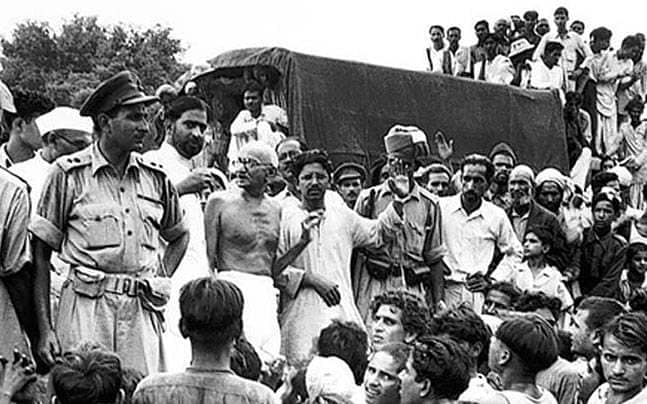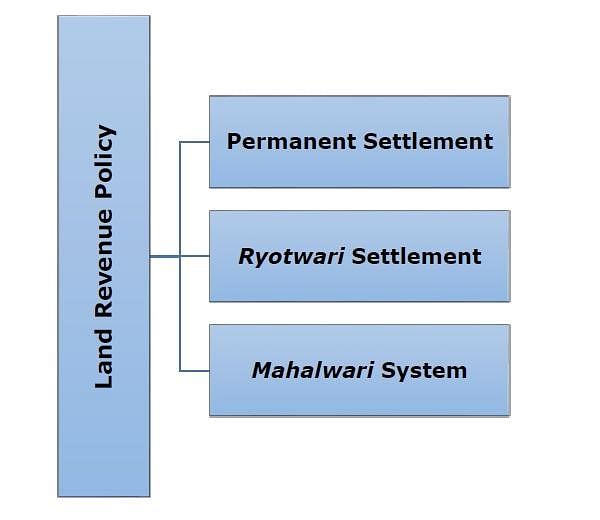NCERT Solutions for Class 8 History Chapter 3 - Ruling the Countryside
Let's recall
Q1. Match the following:
Ans:
Q2. Fill in the blanks:
(a) Growers of woad in Europe saw __________ as a crop which would provide competition to their earnings.
Ans: Growers of woad in Europe saw indigo as a crop which would provide competition to their earnings.
(b) The demand for indigo increased in late eighteenth-century Britain because of __________.
Ans: The demand for indigo increased in late eighteenth-century Britain because of the expansion of cotton production.
(c) The international demand for indigo was affected by the discovery of __________.
Ans: The international demand for indigo was affected by the discovery of synthetic dyes.
(d) The Champaran movement was against __________.
Ans: The Champaran movement was against indigo planters.
 Champaran Movement.
Champaran Movement.
Let's Discuss
Q3. Describe the main features of the Permanent Settlement.
Ans: In order to get a stable revenue income, most of the East India Company’s officials believed that investment in land had to be encouraged and agriculture had to be improved. This led to introduction of permanent settlement in 1793.
 Land Revenue Policy.
Land Revenue Policy.
- By the terms of the settlement the rajas and taluqdars were recognized as zamindars.
- They were asked to collect rent from the peasants and pay revenue to the company.
- The amount to be paid was fixed permanently.
- It was felt that this would ensure a regular flow of revenue into the company’s coffers and at the same time encourages the zamindars to invest is improving the land.
- If the zamindars failed to pay the revenue, which they usually did as the fixed revenue was very high, they lost their zamindari.
Q4. How was the mahalwari system different from the Permanent Settlement?
Ans:
Q5. Give two problems which arose with the new Munro system of fixing revenue.
Ans: Two problems which arose with the new Munro system of fixing revenue were:
- Driven by the desire to increase the income from land, revenue officials fixed too high a revenue demand.
- Peasants were unable to pay ryots fled the countryside and villages became deserted in many regions.
Q6. Why were ryots reluctant to grow indigo?
Ans: The ryots reluctant to grow indigo because:
- The planters paid a very low price for indigo.
- The ryots were not in a position to even recover his cost, earning a profit was a far-fetched idea. This meant that the ryot was always under debt.
- The planters insisted that the peasants cultivate indigo on the most fertile parts of their land, but the peasants preferred growing rice on the best soils as after an indigo harvest, the land could not be used for sowing rice.
Q7. What were the circumstances which led to the eventual collapse of indigo production in Bengal?
Ans: The collapse of indigo production in Bengal was caused by the following circumstances:
- Ryots’ denied producing the indigo anymore
- Protests started taking place by the peasants/ ryots supported by the zamindars
- Following the protests, the Indigo Commission was constituted by the government which accepted the faults of the planters and asked the planters to stop the cultivation.
- Planters eventually moved out of the city
 Indigo production in Bengal.
Indigo production in Bengal.
|
65 videos|424 docs|46 tests
|
FAQs on NCERT Solutions for Class 8 History Chapter 3 - Ruling the Countryside
| 1. What was the impact of British land revenue policies on Indian peasants? |  |
| 2. How did the Permanent Settlement system work in India? |  |
| 3. What was the role of the Zamindars in the British revenue system? |  |
| 4. How did the British revenue system lead to the growth of commercial agriculture in India? |  |
| 5. What was the impact of the British land revenue policies on the Indian economy? |  |



















